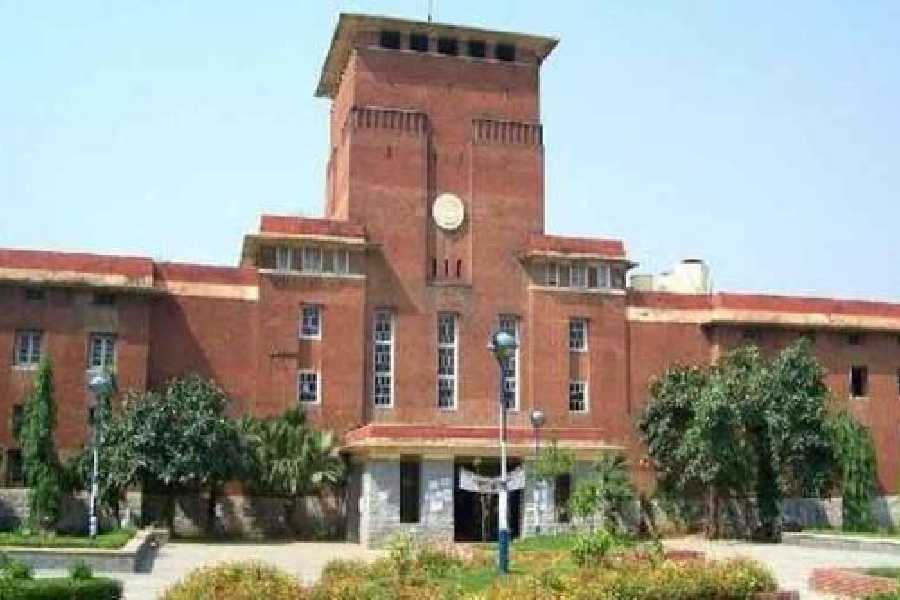⚫ Hundreds of people living in low-lying areas like Beltala Road, Puddapukur Road and Ekbalpore were shifted to community halls and other safe shelters
⚫ Police and Calcutta Municipal Corporation teams alerted residents about the storm through loudhailers
⚫ Police pasted stickers with the words “Dangerous Buildings” written on them on several dilapidated buildings and asked their occupants to evacuate
The weather office has said Cyclone Yaas is unlikely to pass through or by the city but the administration still braced for impact and took a series of steps to minimise damage.
Teams of the disaster management group, Calcutta Municipal Corporation, CESC, fire department, National Disaster Response Force, public works department and the civil defence department started working under a unified command at their designated locations from Tuesday.
Senior officials of various agencies said that never before in the city had so many agencies worked in such a concerted way to counter a natural calamity.
The teams shifted people from unsafe shelters and low-lying areas, trimmed trees, checked electric poles and made announcements about the approaching cyclone, which is likely to hit land on the Odisha coast around Wednesday noon.
A CESC team has been stationed at each of the police stations in the city. At some police stations teams of the disaster management group have been posted, and at others personnel of the National Disaster Response Force have been deployed.
A set of teams comprising police and PWD personnel and another set comprising police and civil defence personnel have started operating in pockets of the city.
Last year, after Amphan, large pockets of the city and outskirts went without power for days as CESC technicians failed to arrive on time to fix the problems. There were reports of residents of areas that had been without power for days hijacking CESC teams.
At many places, police or CMC teams had arrived to cut and remove trees that had snapped overhead electrical lines but there were no CESC personnel in the vicinity who could restore power supply.
“This year, we plan to move together. Agencies like the disaster management group, fire, CMC and the PWD will chop trees and remove them from the roads, while CESC teams will start working on restoring power supply at the same time,” said a senior member of the unified command at Lalbazar.
Each team has been equipped with chainsaws, dragon lights and other tools needed to tackle an emergency. Four motorised boats, operated by the civil defence department, have been stationed at Amherst Street police station, East Jadavpur police station, Alipore Bodyguard Lines and the Police Training School.
Teams comprising CMC officials and police sergeants have been kept on stand-by at the 16 borough offices. “Today we spent the entire day making announcements in neighbourhoods,
requesting people to stay indoors and to keep their windows and doors shut. We are prepared for tomorrow,” said a CMC official in one of the teams.
The multi-agency drive to prepare for the storm follows a model perfected by the Odisha administration, which has time and again faced cyclones efficiently.
When Cyclone Fani hit Odisha and Bengal in May 2019, the neighbouring state had evacuated nearly 1.2 million people to cyclone shelters, according to the World Bank. By doing so, the bank had said, Odisha had succeeded in minimising the loss of human lives.
The state has a very effective communication system, through which alerts and other messages are relayed down to individuals and communities.
Sources in Calcutta's united command said they were trying to follow the same model – shift as many people as possible from the areas that are prone to waterlogging or buildings that may crumble any moment.
“There are enough schools and community halls where those people can be shifted. We have tried our best to create awareness so that they move to safe shelters for a few days,” said a police officer.










